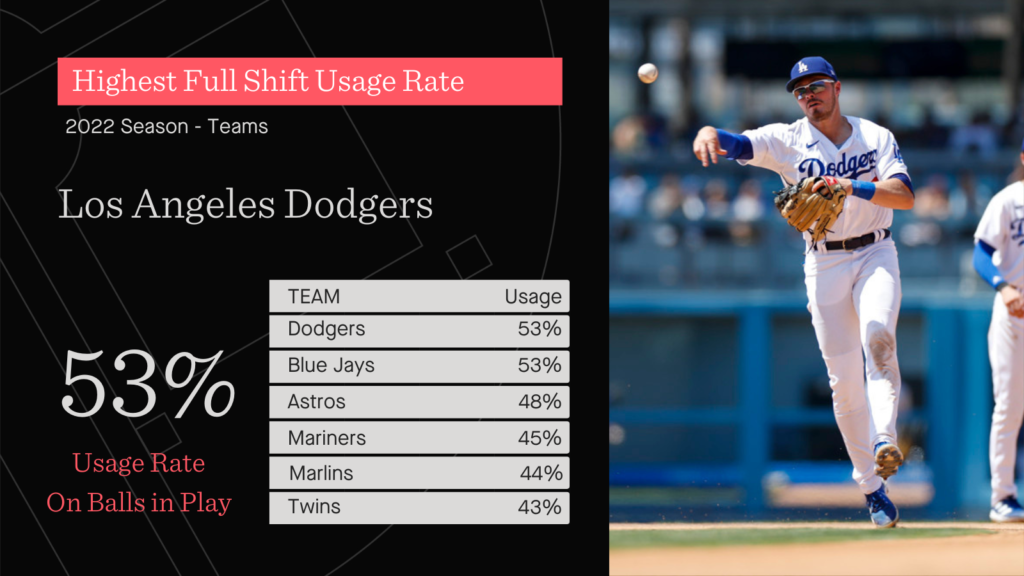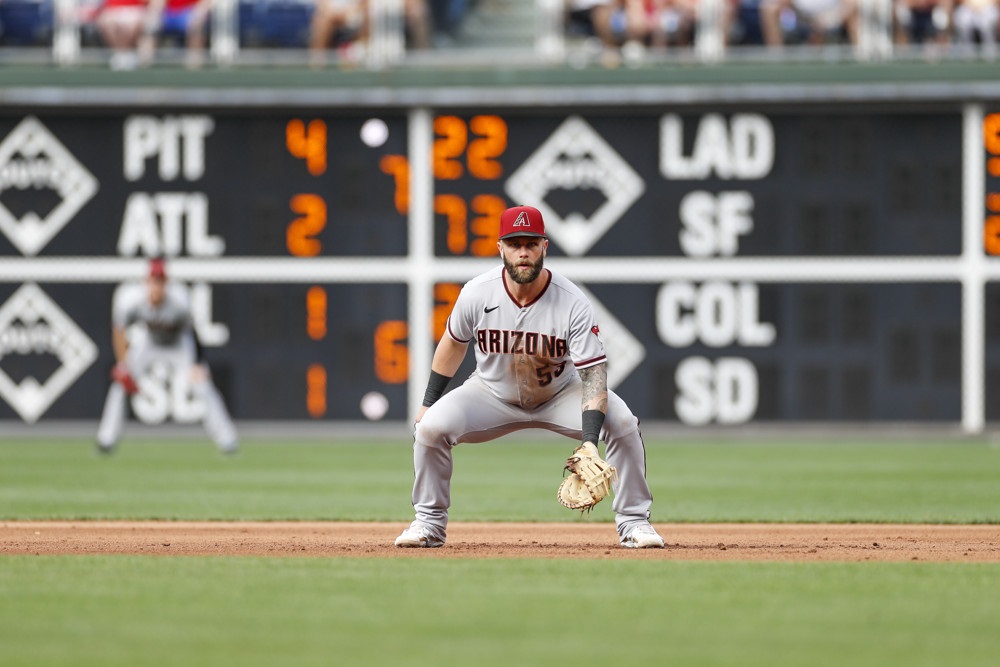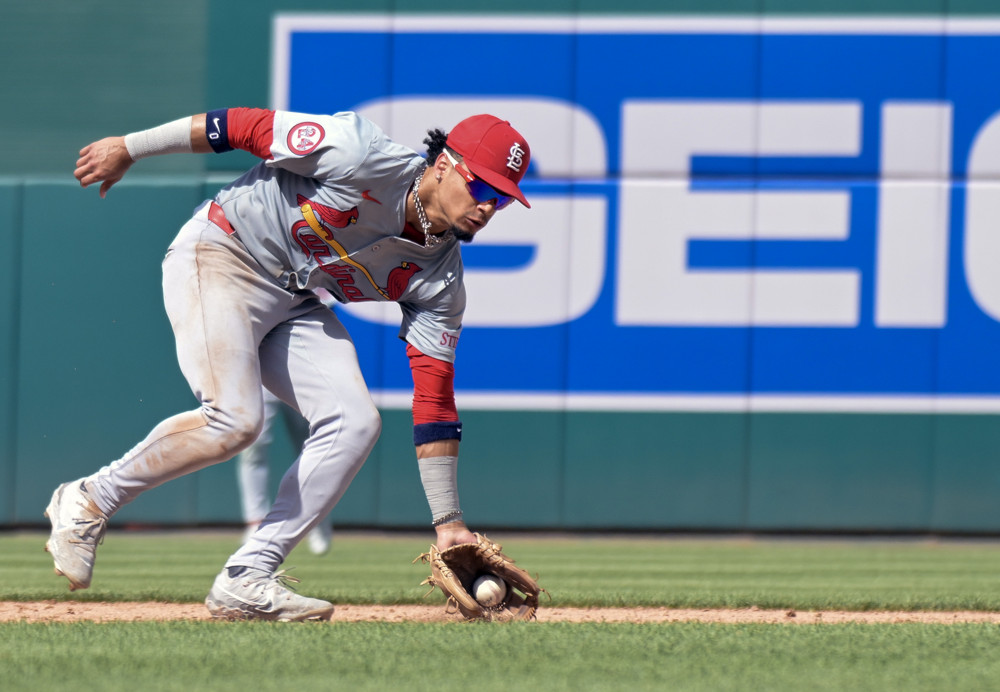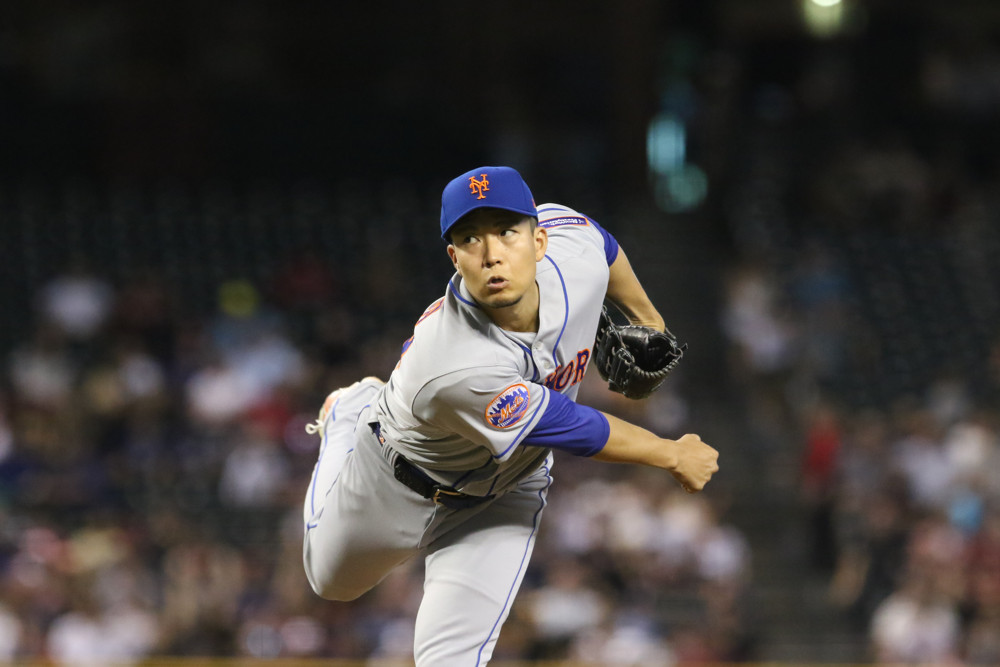The Dodgers have led the majors in full shift frequency in each of the last four seasons, so they’re going to have some adjusting to do with the implementation of new rules prohibiting such defensive alignments next season.
A full shift is defined as one in which three infielders are playing on the pull side of second base. Alignments in which two infielders are playing on each side of second base with two deviating significantly from straight-up positioning are known as partial shifts (which will still be permitted in 2023).
This season, 53% of balls put in play against the Dodgers defense have come against a full defensive shift. That’s a near match for last season (54%), 2020 (55%), and 2019 (52%). The Dodgers made their big jump in shift usage after the 2018 season, a year in which they shifted on 24% of batted balls.
For all their aggressiveness, the Dodgers are similarly good at turning groundballs and bunts into outs whether they use a full shift, a partial shift, or no shift. In all, they rank 8th in the majors in groundball and bunt out rate and are within striking distance of the Top 5.
Right with the Dodgers in shift usage this season are the Blue Jays, another team for whom 53% of balls in play have come versus full shifts (for greater specificity, the Dodgers were at 53.0%, the Blue Jays, 52.7%).
The Blue Jays radically changed their defensive approach this season after using full shifts against only 22% of balls in play in 2021. That 53% number was considerably higher earlier in the season, but it has since tapered off.
Toronto also changed its defensive look in the outfield. The Blue Jays are the MLB leader in what we call “outfield shifts,” instances in which the Statcast data shows that the three outfielders are positioned at least 110 total combined feet from their average position.
The Blue Jays have used an outfield shift 412 times this season. The only other team to do so more than 100 times is the Marlins (110).
The team’s infield and outfield have combined for 32 Runs Saved this season compared to 27 in 2021. Add in strong work from their pitchers and especially their catchers and the team as a whole ranks 6th in MLB in Defensive Runs Saved this season, up from 15th in 2021.
The Astros’ defense will be fascinating to watch next season as they’ll have to change their approach a lot. They have full-shifted on 48% of batted balls against them, but that rate jumps to 79% vs left-handed batters.
The Astros’ shifting has compensated for the age and lack of skill of some of their infielders. The team has gotten negative Runs Saved out of first base, second base, and third base this season, though their shortstop, Jeremy Pena, ranks among the leaders at the position in Defensive Runs Saved.
Though the Astros rate slightly below average at turning groundballs and bunts into outs in full shifts, it’s likely no one is currently complaining given that they have the best record in the AL and their outfield leads MLB in Runs Saved.
As for the teams that will have the least amount of adjusting to do, the Rockies rank at the bottom in shift usage, with one used on just 18% of balls in play against them. The Rockies’ rank in the Top 5 in Runs Saved at first base, second base, and third base this season, as their infield has thrived.
The Guardians (21%), Orioles (22%), Padres (23%), and Yankees (24%) follow the Rockies in least shift usage, with the Yankees inclusion being noteworthy. Their infield leads the majors in Runs Saved this season. They’ve done what’s worked with their personnel and thrived with it.




